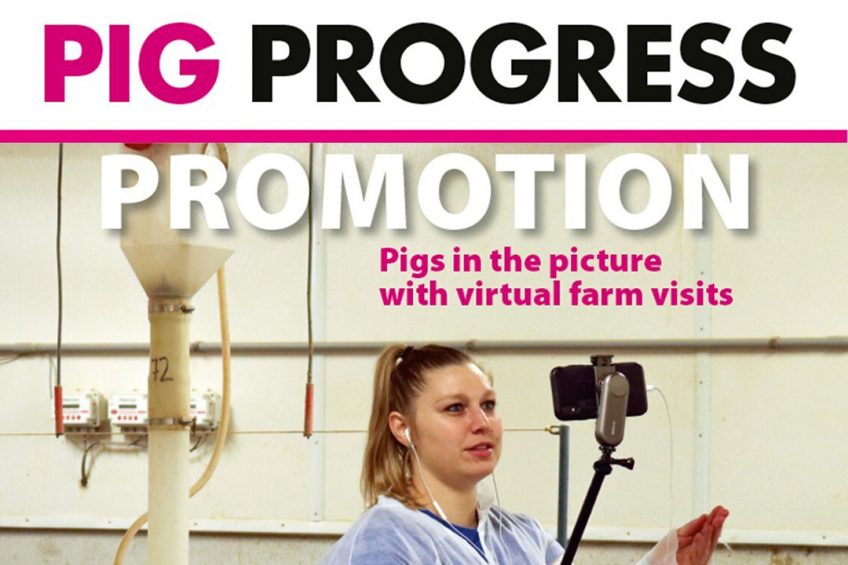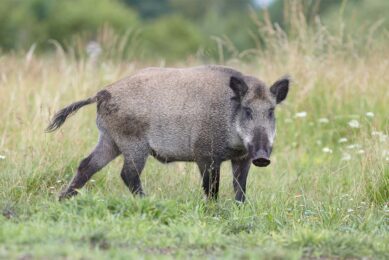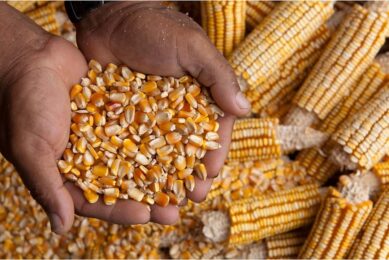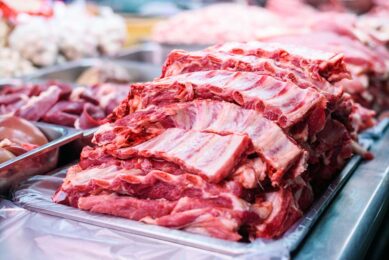Repop, research and remodelling in Pig Progress 2

The second 2021 edition of Pig Progress is now available online. This edition unpacks the repopulation of Chinese pig population and discusses its insatiable market. Researchers delve into the emotions of pigs by exploring and evaluation their communication, faces and body language. Also, how and why does gut health rely on early-life nutrition, and how can a pig’s gut health be determined without touching the pig?
View Pig Progress digital magazine
Wanted: Millions of sows for China
China is looking to repopulate its pig herd after half of the country’s 45 million sows were wiped out directly or indirectly from African Swine Fever. The process will be an interesting one, discussed on pages 6-8, as international breeding organisations prepare to claim their share.
Measuring animal emotions – and why it matters
Researchers at Wageningen University & Research in the Netherlands are working to better understand and interpret the emotions of farm animals through their communication, faces and body language. On pages 10-12, Dr Suresh Neethirajan offers some valuable insight.

IDA – an emerging problem in pigs
What causes Iron Deficiency Anaemia (IDA), a growing problem for young piglets, and what can be done to overcome it? The article on pages 14-15 gives a clear answer.

Non-antibiotic medication against swine dysentery
Although the toolbox for controlling swine dysentery is becoming emptier as the use of antibiotics and zinc oxide are being limited, there is hope in the form of zinc chelate. Read more on pages 16-17.

Confirming gut health without touching the pig
A non-invasive monitoring system can be used to gain information about intestinal integrity and the level of immune activity or inflammation. This article on pages 18-19, looks at the system as well as the results of this method in a nursery trial using β-mannanase.

US antibiotics usage: the numbers explained
The use of medically important antimicrobials (MIA) on swine farms in the US has dropped to historical lows following a major directive that came into effect in 2017. There was a dramatic decrease in its use in 2017, but then a significant increase in 2018. Meanwhile, sales of non-MIAs increased by about 5% in 2018. The article by correspondent Treena Hein on pages 20-23 paints a clearer picture.

Column: Transition weaning diets
On page 23, Columnist Francesc Molist, who has been working with Schothorst Feed Research in the Netherlands for about 10 years, discussed habituating piglets to solid feed before weaning as a way to reduce the drop in feed intake by weaning pigs.
8 lessons learnt to help beat ASF
The fundamentals of African Swine Fever have remained largely consistent over recent decades. Today, however, we know so much more than we did 30 years ago. On pages 24-25, virologist, Dr Klaus Depner, summarises the 8 lessons learnt to help fight the disease.

Working together is the answer to eradicate ASFv
Being the coordinator of a European consortium to eradicate African Swine Fever once and for all, professor of Animal Health, José Manuel Sánchez-Vizcaíno, believes cooperation and working together is key. He discusses ASFv with Pig Progress Editor, Vincent ter Beek, on pages 26-29.

Opening new avenues for pig promotion
South Dakota State University in the US welcomes virtual visitors to come and join a virtual barn tour to look inside their facilities and learn more about the world of sows, piglets and swine diets at the university’s Swine Education and Research Unit. Take a peak on pages 30-33.

Water-to-feed ratios in growing-finishers
Liquid feed has become a popular method for feeding pigs in many countries in Europe, but many questions have not yet been answered. This article on pages 34-35 offers insights into optimal water-to-feed ratio for improving organic matter and gross energy digestibility, wet/dry feed systems, and advice to pork producers.

Does a lower stomach pH improve performance?
At weaning, several factors, including new feed, can contribute to an increased stomach pH, which can interfere with protein digestion. This article, on pages 37-38, takes a closer look at a a meta-analysis study evaluating the role of a water acidifier in reducing stomach pH and improving piglet performance.

Good gut reaction relies on early life nutrition
In this article on pages 41-42, Alltech’s Dr Hazel Rooney discussed early-life nutrition and gut health. Establishing a favourable microbial population as soon as possible after birth helps to get piglets off to a healthy start.

Mycotoxin transmission from sows to piglets
To determine the risks of mycotoxins to animal health and performance, a recent study measured the mycotoxin levels in colostrum and milk under practical conditions, as well as in the serum of both sows and piglets. This article on pages 45-47 summarises the findings.

Linking sow diets to piglet nutrition
Piglets need to be educated to eat their starter feed before weaning, and thus the palatability of their pre-weaning (including sow diets) and post-weaning diets need to be matched. If sow and weaner diets are linked by the same flavour, young piglets learn to start eating like a pig sooner. Read about this relatively new approach on pages 48-49.

EU parliament decides fate of ‘veggie meat’
Although MEPs were divided on the subject, the recent vote undertaken by the European Parliament ultimately resulted in a decision to not enforce a ban on the use of meat-related names for plant-based substitutes such as “veggie burgers”. Read the analysis by correspondent Melanie Epp on pages 50-51.

A model to adapt buildings to climate
Hotter summers and colder winters can impact pig production and adaptations in terms of barn structure, equipment and management need to be evaluated. A model-based tool for such an evaluation has been developed, named ThermiPig, and is featured on pages 52-54.

Building a pork brand, 1 tour at a time
The EU PiG Innovation featured on page 55 is the unique approach of creating awareness through company tours and the sale of unique Berkhout meat with a story.

Column: Mass depopulation
In this column on page 58, Dr Monique Pairis-Garcia discusses the difficult decision made by producers to depopulate livestock farms in 2020.
 Beheer
Beheer








 WP Admin
WP Admin  Bewerk bericht
Bewerk bericht